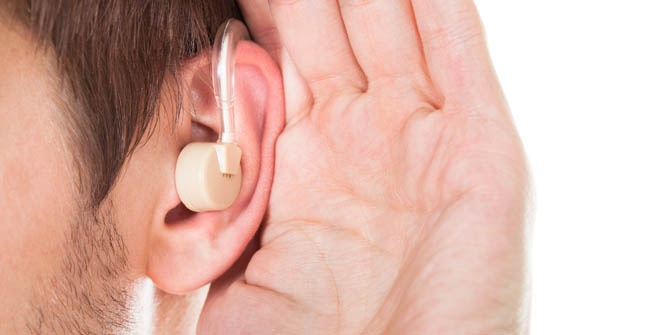Age-related hearing loss (presbycusis) affects 1 in 3 people in the United States between the ages of 65 and 74, while over half of individuals age 75 and older have hearing problems. Hearing loss can affect your life in unexpected ways, not only making it difficult to enjoy an active social life, but also leading to possibly dangerous situations when you can't understand things like a doctor's instructions or hear a smoke alarm. Read on to see if you might benefit from a hearing aid.
How Hearing Aids Help
Majority of hearing loss in adults is a direct result from damage to the inner ear. This is where tiny hair cells turn sound vibrations into impulses that nerve cells then carry to the brain. The most common causes of this type of damage are aging and chronic exposure to loud noises.
A second type of hearing loss originates in the middle or outer ear and stems from reversible problems such as impacted earwax, fluid buildup from an infection, or the use of certain medications.
Hearing loss can cause increase anxiety, and loneliness. When you have difficulty hearing, individuals tend to avoid social settings such as restaurants, parties, or other gatherings. It can also can make driving dangerous, or cause you to be less aware of your surroundings. Hearing aids can restore hearing to avoid these issues.
Hearing aids make sounds louder. They're small electronic devices worn either in or behind your ear. Hearing aids have three parts: a microphone, an amplifier, and a speaker. Basically, the hearing aid converts sound waves into signals that are amplified and sent to the ear, allowing a person with hearing loss to listen and communicate.
Types of Hearing Aids
Most hearing loss can be alleviated by using a hearing aid or consulting with your primary care physician. If you are a candidate for a hearing aid, there are many types you can choose. It is important to understand what types are available.
-
Completely in the Canal: This hearing aid fits completely in the ear canal. It is the least noticeable, and the least likely to pick up outsides noises. You can still use the telephone with this hearing aid. It is molded to fit inside your ear canal. This type is very simple without features such as volume control, or microphones.
-
In the Canal: This hearing aid is custom molded and fits partly in the ear canal, but not as deeply as the completely-in-the-canal aid. This type is also very simple without features such as volume control, or microphones.
-
Half Shell: The half shell is custom molded and fills the lower portion of the bowl-shaped area of your outer ear. This type includes additional features such as volume control, or microphones.
-
Full Shell: This full shell fits fills most of the bowl-shaped area of your outer ear. It is likely to pick up outsides noises such as wind. This type includes additional features such as volume control, or microphones.
-
Behind the Ear: This hearing aid hooks over the top of your ear and rests behind the ear. The hearing aid picks up sound, amplifies it and carries the amplified sound to an ear mold that fits inside your ear canal. It is the most visible.
-
Open Fit: These are usually very small behind the ear style devices, although larger behind the ear devices can be modified for a more “open” fit. Sound travels from the instrument through a small tube or wire to a tiny dome or speaker in the ear canal.
If you feel embarrassed or frustrated because you can't always hear in social situations, or if you have trouble hearing the television at home or movies in a theater at levels that others are comfortable with, you might want to consider talking to your doctor about whether you're experiencing hearing loss.
A board-certified ear, nose, and throat physician who will check for impacted earwax and other reversible causes. If none are found, the doctor will probably refer you to an audiologist, a professional who specializes in testing and treating hearing problems.
If your loved one struggles with their hearing, they may benefit from home care. Reach out to a Caring location near you to learn more.


